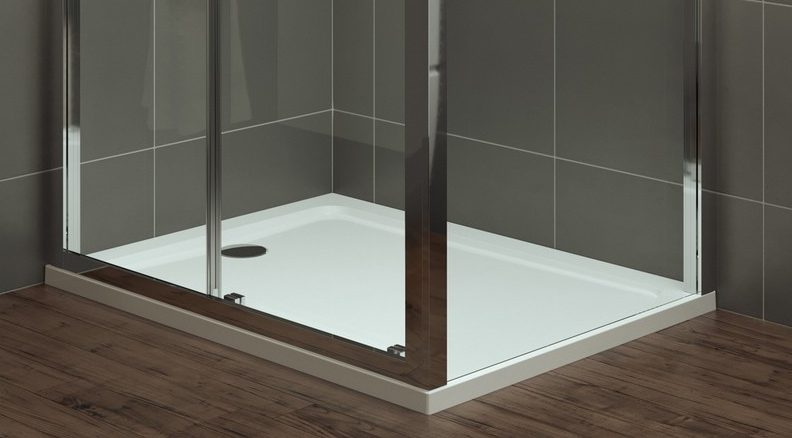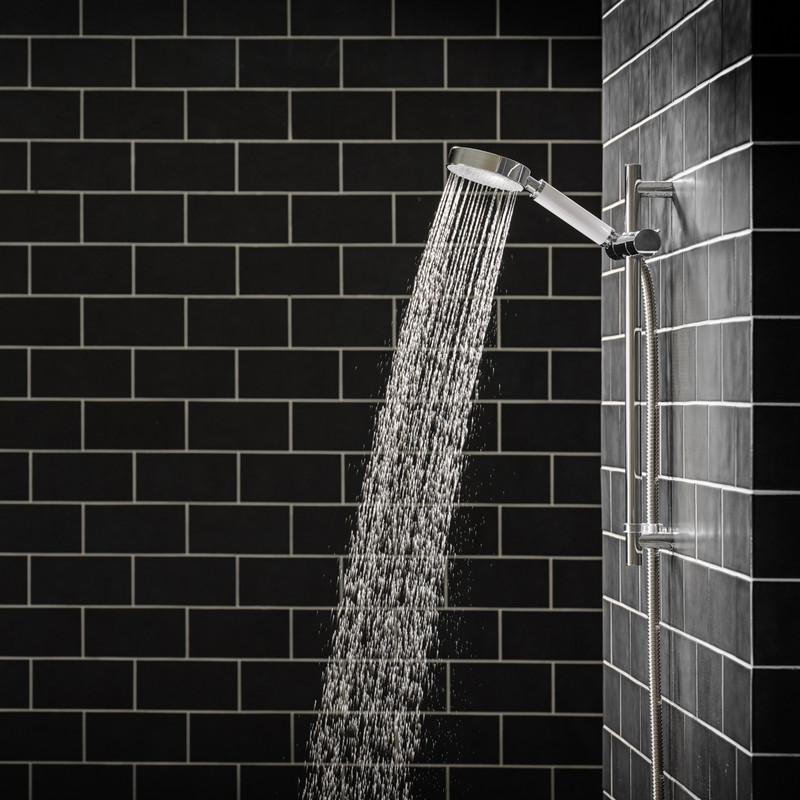You probably don’t give much thought to your shower tray, but choosing the right type of shower tray can make all the difference. From making your bathroom feel more luxurious and comfortable to use, to future-proofing the room for years to come, the right shower tray may even increase the value of your home.
Your choice will depend on: your budget, your style, the size of the bathroom, and your accessibility needs. Replacing like-for-like is often cheaper and easier if you’re looking to save when carrying out a complete bathroom refurbishment.
Pick between three main shower tray types at Toolstation depending on the height above the floor: raised, low, or level. You’ll also find different shower tray shapes and sizes available which can help you maximise your space and add a touch of luxury.
Types of Shower Trays

Raised Shower Trays
Raised shower trays are shower trays that are at least 50mm above the floor. They are a very common type of tray and use riser kits (a set of adjustable legs and a plinth) so you can choose the shower tray height that is right for you and your bathroom.
Shower trays that are raised above the level of the floor are ideal for bathrooms with a solid concrete floor or raised pipework, as they give the plumbing more space underneath for the waste water to get to the soil pipe. This also makes the plumbing easier to access if they need maintenance or repairing.
Raised shower trays are less suited to those with some accessibility issues and wheelchair users. Even if you don’t personally need a lower profile shower tray, you may find that future-proofing your home with an accessible tray could increase your home’s value. Also, to give you freedom to choose the height of your shower tray, the riser kit is sold separately.
Advantages
-
Ideal for bathrooms with solid floors
-
Maintaining plumbing is easier
Things to Consider
-
Less accessible because of step to get into shower
-
Does not ‘future-proof’ your home
-
Riser kit sold separately

Low Shower Trays
Low shower trays are approximately 40-45mm above the floor. They need to be installed completely level to ensure the water drains towards the waste and to give a good, flat foundation to fit the shower door or wet room panel on.
These low profile shower trays are fairly easy to install and widely available in a range of styles – in fact, you’ll find that raised shower trays are usually low profile trays installed with a riser kit. Their slim appearance compliments both contemporary and traditional bathrooms.
Whilst low shower trays are lower to the floor than raised trays, they’re still not totally accessible – as there will be a small step to get in the shower which is likely to be unsuitable for wheelchair users. You may find low profile trays have less room for bulky pipework, so installation could be more difficult.
Advantages
-
Easy to install
-
Widely available in a range of styles, sizes and colours
-
Complements a range of bathroom interior styles
Things to Consider
-
Not totally accessible, such as for wheelchair users
-
Less room underneath for pipework

Level Shower Trays
Level trays are the slimmest tray design available and are designed to be installed in a recess in the floor. They generally have a height of 25mm and are used in a range of bathroom styles, but most commonly to achieve a wet room look, or in large, modern bathrooms.
If you’re looking for an accessible shower tray, level trays allow you to push a wheelchair directly into the shower and have virtually no step in. These level shower trays are also perfect for modern, contemporary bathrooms because they fit seamlessly along bathroom tiles. Recessed, level shower trays are a cost-effective and robust alternative to a wet room.
Due to the installation requirements needed for level shower trays, they’re better suited to full bathroom renovations or when building a new-build home – as the pipework may need to be amended to fit. Level shower trays may not be suitable for every accessibility if they're not installed into a recess in the floor, as they have a 25mm step. You also need to make sure the waste can cope with the shower output to ensure the water drains quickly.
Advantages
-
Accessible
-
Can be installed in a recess
-
Suit contemporary bathrooms
Things to Consider
-
Pipework needs to be below the floor
-
May not suit every accessibility need
-
The waste needs to cope with the shower output
Key Shower Tray Features
Shape
There are four main shapes of shower trays: rectangular, square, offset quadrant and quadrant. Square and quadrant trays are suited to smaller bathrooms, while rectangular shower trays are common in wet rooms or if you’re looking to replace your bath with a larger shower. Offset quadrant and quadrant shower trays have a rounded corner which offers a softer appearance for a bathroom and are perfect for space-saving.
Riser Kits
Shower tray riser kits allow you to turn a low shower tray into a raised one to allow more room for pipework, normally raising the tray up to 100mm higher. They also mean you can adjust the tray if the floor is uneven, such as in old properties, because each leg is adjustable. You’ll find our riser kits come with a fascia panel to clip onto the legs for a seamless look.
Material
Here at Toolstation, you’ll find two main types of shower tray material: acrylic and acrylic stone resin. Acrylic shower trays are affordable, lightweight, durable and easy to clean. Acrylic stone resin shower trays sandwich the stone resin between two acrylic sheets providing durability and rigidness giving you a stable foundation for the shower. Acrylic is easy to clean, scratch resistant and durable, but is also warm to the touch. You’ll find some shower trays with increased slip resistance for greater peace of mind for young, old or vulnerable users.
Colour
The vast majority of acrylic shower trays are white, which come in a wide variety of shapes, styles and sizes – as well as suiting just about any bathroom aesthetic. You’ll also find slate grey shower trays for an ultra-modern appearance.
Shower Enclosures
Shower enclosures are usually made of one or more panels of glass and fit around the edge of the shower tray. You’ll find single doors, cubicles or wet room panels to fit your bathroom and shower tray perfectly. Nearly all shower trays are universally designed to fit any shower door. To make sure your shower door opens as designed the tray must be installed level.
Waste Traps & Drainage
Shower traps and drainage systems, also known as waste traps, connect to the bottom of the shower tray and allow the waste water to drain into the sewer. Some waste traps have removable features like hair catchers to keep them clean and stop pipes getting blocked up. If the pipes do get clogged, then the removable components allow a plumber to fix the problem without taking up the whole shower tray.
Drain Styles & Location
Some showers have the drain in the middle of the tray, while others will be at the front or back, left or right. You’ll even find shower trays with hidden drains which can make your bathroom feel even more sleek and modern. Take into consideration the joist layout under your floor when choosing your tray and drain location to make installation easier.
Antibacterial & Antimicrobial Coatings
Hate cleaning your shower tray? We can’t promise you’ll never clean it again, but you’ll find our range of shower trays with an antibacterial and antimicrobial coating means less frequent cleaning!



